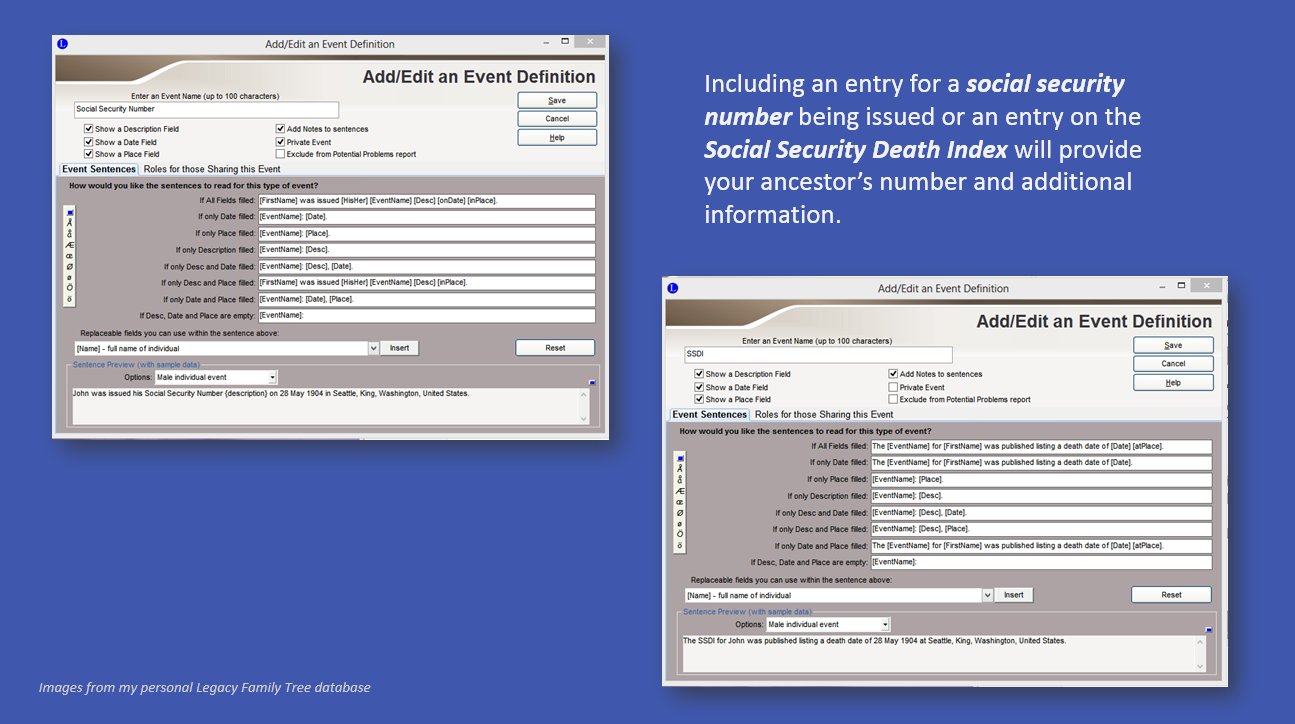 |
| The Social Security Act of 1935 - providing for the general welfare of our people Secretary of Labor Frances Perkins is one of my personal heroes! |
To-date the SSA has issued over 450 million social security numbers, at the current rate of 5.5 million numbers each year (and since social security numbers are not reused, each number is unique!). The nine-digit number was, until recently, made up using a specific format: AAA-GG-SSSS or (1) a geographic area number followed by (2) a group number followed by (c) a serial number. Until 2011 a researcher could make some assumptions about where and when a person made application for their social security number based on the AAA-GG-SSS configuration. Today social security numbers are configured on a completely random basis.
Knowing an ancestor's social security number is useful to confirm the identity of a person's records (oftentimes it was used for not only governmental records but also educational and employment records). The SSA compiles a database called the Death Master File (more commonly known as the Social Security Death Index or SSDI). This database has been made available since 1980 and as deaths are reported to the SSA, certain information from the database is published and can be found at a variety of sites online (caveat: keep in mind that not everyone is in the SSDI):
- given name and surname
- full date of birth
- month and year of death (now the full date)
- social security number (now these are redacted due to security concerns)
- whether the death has been verified
- last zip-code for residence and/or benefit payment
Including your ancestor's social security number in events/facts is is good practice. Often you will see this number used on educational records, military records, employment records, death certificates and burial records. If you want to acquire a copy of your ancestor's application for social security number (SS-5) and/or claims file, you can fill out SSA form 711 (done under the Freedom of Information Act, subject to filing and fee requirements). These files can have a wealth of additional information, including parents' full names, residences, employment information, and applicant's signature.
I add social security number and SSDI to my Legacy database as events/facts. I always check my SSDI information against my death certificates. You might want to play with the events/facts definition for these entries. Ask yourself some questions before you set up your event/fact and then make sure to check your work. Do you include the social security number in the description or notes section? If you record social security numbers for living individuals, verify that you keep that information private - with the use of double brackets or checking the appropriate boxes. SSDI information is online. Although it does not raise the same security concerns, do exercise caution when attaching SSDI information to a family tree as living family members might not want this information shared with the general public.
 |
| the social security number & SSDI event definitions |
To learn more about social security records research, check out the following links:
Social Security Sleuthing Article by Pamela Boyer Porter
Social Security Death Index on Wikipedia
and search the SSDI at the following sites with these links:
AmericanAncestors SSDI search (NEHGS) (be sure to use the advanced search feature)
See you back here tomorrow for the letter T!
No comments:
Post a Comment
Welcome - thanks for sharing - just so you know, all comments are moderated.